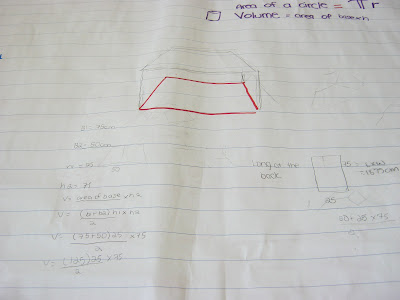For Lisa's lesson study she wanted to not only do a Bansho as a consolidation strategy, but also do her lesson as Bansho. She teaches a combined Grade 2/3 class and wanted to do a parallel task that would allow for both grades to not only meet curriculum expectations but also do some problem solving as well. So she took a question from a previous EQAO test and modified it to meet her needs.
Her minds on involved estimating and measuring objects in the classroom using both standard and non-standard units.
For the action she had the Grade 2 students (and any student on a modified IEP) do a problem where the students had to figure out how tall a student was. For the Grade 3 students they had to use a reference of a door and a door knob to determine how tall a student was.What was a great experience for this lesson study was that we went a little longer during the action, so we didn't get to consolidate right away. The students finished up just as the recess bell rang. What was great for the nine teachers in the room is that it allowed us the time to talk about the strategies that the students used to solve the problems, and where we would put them in the Bansho. This is an opportunity that we don't always get when we are working in such a large group. Usually, the two or three people co-teaching get to have this discussion, but it is usually on the fly and usually done pretty rushed. But today, the nine of us had about 15 minutes to sort through the work, move it around, and persuade others to see our reasoning behind our choice.
When the students came back we had them talk about what they noticed was the same in each of the groups and what they noticed was different. They then gave their strategy a name and recorded it. Here is what they saw:
 |
| Counting cubes to get her height. |
 |
| Doubled checked by counting backwards from 18 to the door handle. (They originally counted up from 9 to 18 to see how many blocks were left) |
 |
| Drew a line to meet the door knob. |
 |
| Used subtraction after they converted M to Cm |
A great afternoon spent with a great group of colleagues learning from each other, and working towards improved student achievement.
















































